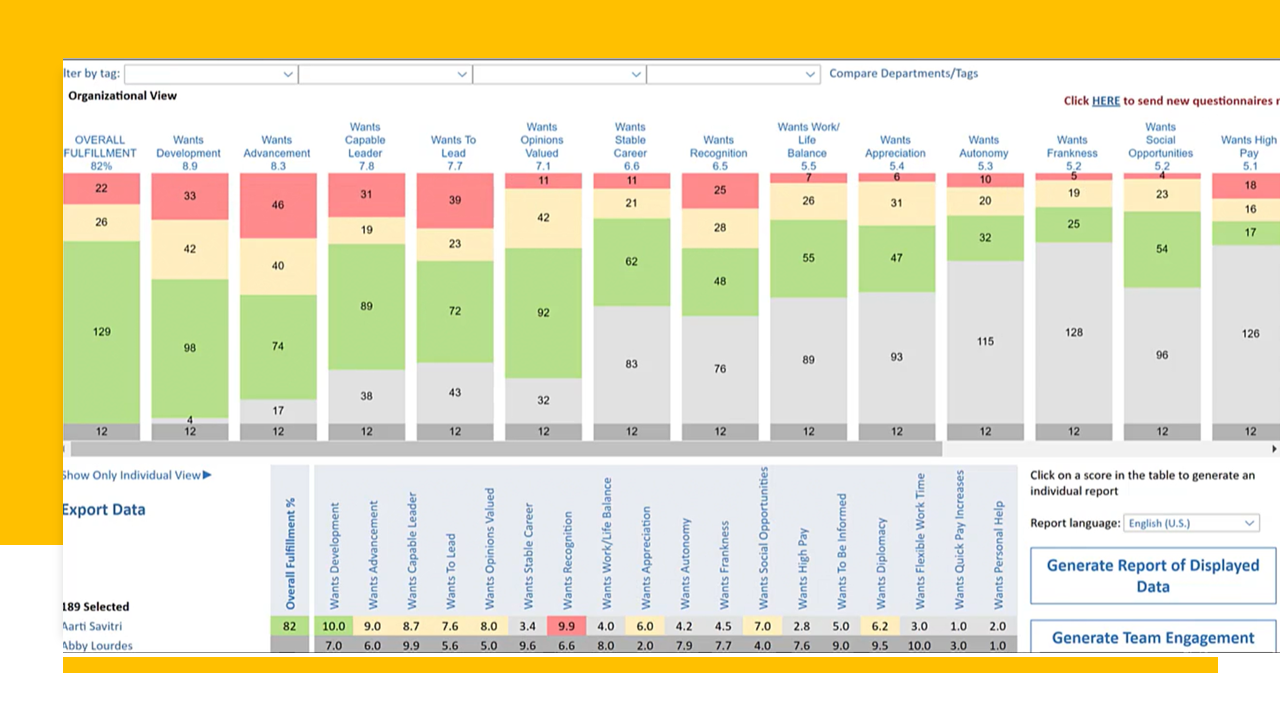This is essentially a conceptual mapping of how to create a high performance environment in an organization. To achieve this, we've developed a process for improving employee experience while also improving leadership effectiveness. This creates a mutually beneficial relationship between employees and the organization with the optimal information and leadership effectiveness with the following expected outcomes:
Expected Outcomes:
Increased Engagement: A 20% increase in employee engagement scores within 12 months.
Reduced Turnover: A double-digit decrease in employee turnover rate within the same period (greatly dependent on individual organization's opportunity)
Improved Fulfillment: A 25% increase in employee satisfaction with their work and career development opportunities.
Enhanced Belonging: A 30% increase in employees feeling valued, included, and connected to the organization.
By combining data-driven insights, facilitation, targeted interventions, and continuous improvement activities, this program creates a high performance culture backed up by the data.
The challenge of employee engagement extends far beyond visible motivators. Effective leaders understand that the conventional engagement tactics-monetary incentives, public recognition, and expressions of appreciation-may resonate with some while falling flat with others.
The iceberg model below reveals that beneath the surface lies a complex network of engagement factors unique to each individual. Employee experience and performance are largely determined by how fulfilled you are on the key engagement factors important to you. As you can see in the list below, these consist of your underlying beliefs about work, success, and fulfillment (mental models) and your natural tendencies and biases. As one goes about accomplishing their work, the important elements relative to these include how your role is designed (and executed), how you interact in the organization and the recurring experiences that shape your expectations (including reactions to specific work situations). Effective managers and leaders, with this data, can improve their effectiveness in "meaning-making" as well as creating consistently high performing teams.
Most organizations conduct employee satisfaction surveys, eNPS, or so-called engagement/pulse surveys. These ask the same questions of all participants whether the issue is important to the individual or not. They are also anonymous so you can’t address an individual’s results directly. These results are analyzed by the organization and departments but because there are over 20 engagement factors that can be the driving influence for any one individual (advancement, money, public recognition, problem-solving, relationship, job security…), when they are averaged together, the usefulness diminishes.
Also, as has been well documented, most organizations struggle to improve significantly even with volumes of this kind of data. Unfortunately, the poor results don’t seem to matter, as the abundance of this anonymous data and the reports generated proliferate in many organization with little discernable benefit.
There is a better way that moves the needle up.
The Keys to Success
If you don't buy into and/or understand these two things:
The importance of focusing on both fulfillment and engagement for employee performance
The necessity of understanding individual motivations, tendencies, preferences and behaviors and the folly of relying solely on anonymous engagement readings.
Please click here to read our White Paper before continuing.
What’s the situation today with Engagement and Pulse Survey Data & Programs?
After the E-leverage Process
“The assessment itself is very powerful because it’s very real, it’s very personal, it’s very relevant. And if you combine that with some structured learning, we believe that you can get a big impact in terms of really directing these behavioral shifts. Coaching and feedback is extremely important to our organization as relates to our people managers.”
Typical Programs to Address Engagement














